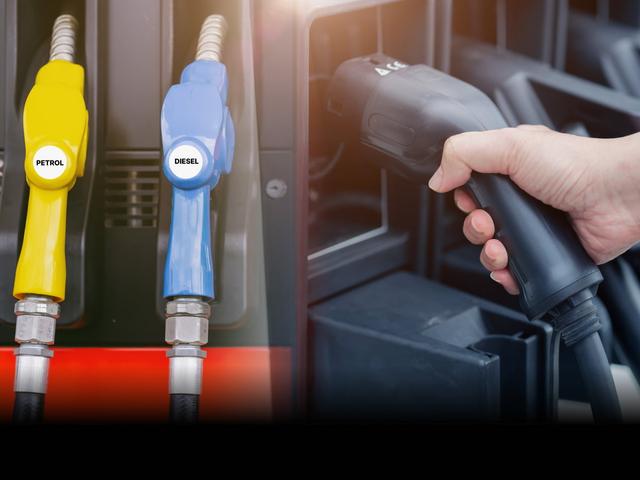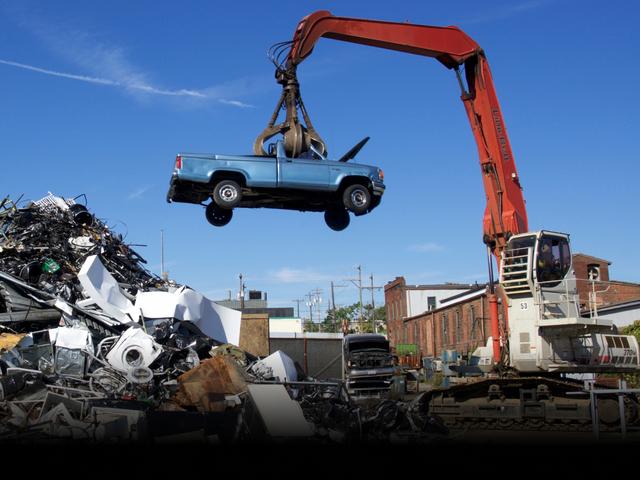If you’ve ever had issues with your car’s performance, you’re likely to have heard the term throttle body mentioned by your service centre or mechanic. Sluggish performance, erratic idling, a check engine light or poor fuel efficiency, for example, are some of the most noticeable bad throttle body symptoms. The throttle body is a component situated between the air intake and intake manifold on a car’s engine, responsible for varying the amount of air entering the engine.
Driving with a bad or failing throttle body is not recommended as you won’t get the best performance or efficiency out of your vehicle. What’s worse, a bad throttle body can negatively affect other components in your vehicle’s engine leading to further damage. Catching bad throttle body symptoms early and regular engine maintenance is a good way to avoid more expensive repair bills. We highlight all the symptoms you need to look out for and how to diagnose a failing throttle body.
Join the official CARS24 auto community CLUTCH for more news, updates and discussions.
What is a throttle body?

An internal combustion engine needs an air and fuel mixture to operate. A throttle body is a component that regulates the amount of air that can enter an engine, thus directly regulating engine speed. The throttle body is a critical part of a vehicle’s air intake system — any issue with the throttle body will result in decreased performance.
In older carbureted engines, the throttle body is situated within the carburettor assembly itself. In fuel-injected cars, the throttle body sits between the air intake and the intake manifold. It consists of a throttle plate that opens and closes to regulate the flow of air into the engine. In newer cars, the throttle plate is operated by a motor controlled by the car’s ECU according to throttle position. Older cars use a throttle plate, which is mechanically linked to the throttle pedal.
A throttle body, by definition, is any apparatus that regulates the flow of air into an engine, crucial for regulating the air-fuel mixture in the engine. More air equals more fuel, which means more power is produced.
How throttle body works

A throttle body is made up of an oval- or round-shaped valve situated in a special housing that allows it to pivot on a shaft. The throttle plate or butterfly valve’s function is to regulate the flow of air — when the valve is closed no air is let in; it rotates open according to the amount the throttle pedal has been depressed, letting in more air.
This functionality is either directly mechanical via cable operation, or via a throttle position sensor (in electronic fuel injected engines) which dictates how much the throttle plate should open or close for any given throttle position. When the throttle plate closes, it chokes or throttles the airflow in the combustion chamber, thus regulating engine speed.
Throttle Body Location
The location of the throttle body is dictated by the type of engine in the vehicle. Older car models have the throttle body within the carburettor housing, while newer vehicles have the throttle body situated between the air intake/air filter system and the intake manifold which feeds the engine block.
Also Read : 100 Car Hacks, Tricks, and DIY Hacks Everyone Needs To Know
Symptoms of a bad or failing throttle body

Fortunately, there are a few noticeable bad throttle body symptoms. Some are more obvious than others, such as an illuminated check engine light, erratic idle, issues with acceleration and poor fuel efficiency. Any of these symptoms appearing in your car in conjunction with others will help pinpoint the issue down to the throttle body. Some throttle body issues are easily fixed, while others could require more time-intensive and expensive repairs. Going through this list of symptoms should help diagnose issues you may be having with your car.
Check engine light
An illuminated check engine light on your car’s instrument cluster is a clear sign that something is wrong with the critical functionality of your vehicle. The car’s ECU performs self-checks during operation and any abnormality in function will trigger the check engine light.
While a check engine light can point to a variety of issues, a check engine light warning plus any of the other symptoms on the list could help trace your car’s issues down to a bad or failing throttle body.
As a general rule of thumb, you don’t want to drive your car with the check engine light glowing, as it could be an early warning sign of critical failure of any number of parts. Stop your vehicle, explain your car’s symptoms to a professional mechanic and only continue if you’ve been given the go-ahead.
Dirt or grime build-up
If you notice a build-up of dirt or grime around the throttle body, it’s a sign of a leak somewhere in the system that could lead to early failure of the component. The dirt or grime build-up could be either at the air intake side or the intake manifold side of the throttle body. Grime on the air intake end of the throttle body could be a sign of a failing intake hose/pipe, which will lead to sludge buildup around the throttle body plate. This will eventually cause the throttle body plate to become stuck. It’s best to immediately replace any old, cracked or brittle rubber hoses and pipes to avoid such failures.
Stalling
When the throttle body is dirty or faulty, the car will suffer from stalling issues with the engine dying from time to time when it’s at idle, or even under low throttle application. This could be due to a throttle plate that’s unable to open fully because of dirt or grime. This leads to less air than required entering the engine, which can trigger the ECU to cut the engine to protect it. Stalling issues due to a dirty throttle body can usually be fixed by cleaning the throttle body. If you face prolonged stalling issues, it is best to get your car checked by a professional.
Erratic idle
A bad or failing throttle body could also lead to an erratic idle. This is when engine rpms fluctuate even when the car isn’t moving, or the throttle pedal is pressed. Also known as engine hunting, these idle issues are caused by the ECU not reading the correct predetermined amount of air entering the engine due to an issue with the throttle body. The first solution to an erratic idle would be to clean the throttle body.
Rough running
If your car’s engine is running rough, that is misfiring under acceleration or surging, it could be due to a faulty throttle body. This is usually a symptom of an advanced issue with the throttle body. Cleaning the throttle body could help in some cases. In other cases, it may require replacement to take care of the issue.
Slow acceleration
If you notice that your car’s acceleration is slower than normal, or that it’s taking longer to achieve regular running speeds, it could be a symptom of a dirty throttle body. Dirt/grime buildup will disrupt the flow of air into the engine, ultimately affecting performance for a particular throttle application. Usually, this will require more throttle input to achieve similar performance as before. Thoroughly cleaning the throttle body could help with this issue. Slow acceleration could also be due to other reasons, so cleaning the throttle body is one of many solutions here.
Poor fuel efficiency
Similar to issues with acceleration, if you notice your car is returning lower fuel efficiency than normal, it could be due to a dirty throttle body. Any disruptions in pressure or flow of air into an engine will result in less than-peak performance. This is because the engine will require more fuel to achieve proper combustion, leading to higher use of fuel.
Warning messages
Some modern cars, especially luxury cars, can even display a specific warning message on the instrumentation or infotainment screen as an early sign of a bad or failing throttle body. These warnings will draw your attention to the car operating at less than full performance, limiting engine speed in each gear. The messages range from warnings about the car being in reduced power mode to limp/reach home mode. The best thing to do in such a scenario is to get the car towed to a professional for further diagnostics.
Can you drive with a bad throttle body?
While it may seem that some of the bad or failing throttle body symptoms can be mild, it is advisable to not drive with a bad throttle body. Continuing to drive with a dirty/clogged or malfunctioning throttle body can affect other engine components negatively, as well as components further downstream of the intake. Driving with a dirty or failing throttle body puts more stress on other components, such as the valves, valvetrain, spark plugs, etc as the engine is not functioning at its designed efficiency.
The long-term effects of driving with a bad throttle body extend to damaging the catalytic converter as well since the engine’s combustion cycle could be affected. Any of the damage associated with a bad or failing throttle body is more serious and expensive to fix than simply cleaning your car’s throttle body, or replacing the part.
Throttle body maintenance: Prevention tips

The best way to make sure your car’s throttle body is operating as it should is by frequent inspection of your car’s engine bay.
- Check for leaks or dirt/grime accumulation, which is an early sign of something wrong in the intake system
- The best safeguard against throttle body failure is to regularly get the throttle body mechanism cleaned
- It is advisable to use shorter intervals than the manufacturer recommended if you regularly drive in excessively dusty conditions
- Preventative maintenance is effective against bad throttle body symptoms in most cases
Conclusion
The throttle body is a vital component in your car’s performance, as it regulates engine speed directly. Proper maintenance of your car’s throttle body can help you avoid some of the common symptoms of a bad or failing throttle body. It’s an easy way to restore any lost performance or fuel efficiency in an older vehicle as well. In many cases, cleaning a throttle body can even be a DIY-project at home.
FAQs
Q. What does a failing throttle body sound like?
A failing throttle body will sound like the engine is stalling, surging or hunting at idle, with the engine speed fluctuating as it’s unable to hold idle speed.
Q. How can I tell if my throttle body is bad?
An early symptom of a bad throttle body will be a poor or erratic idle. These issues are especially apparent at idle, since some throttle body issues can be masked by increasing the throttle application.
Q. What happens when you have a bad throttle body?
When you have a bad throttle body, your car will exhibit symptoms ranging from erratic idling, to stalling, poor acceleration, poor fuel efficiency and more.
Q. Is it safe to drive with a bad throttle body?
Generally it is safe to drive with a bad throttle body, but only till the point you can have the car further diagnosed or the throttle body cleaned. Continual driving with a bad throttle body can damage other components.
Q. When to replace the throttle body?
If the symptoms of a dirty or clogged throttle body continue even after servicing or getting the throttle body cleaned, it is probably time to replace the throttle body.
Q. What are the signs of a dirty throttle body?
The signs of a dirty throttle body include erratic idling, engine stalling and poor acceleration performance.



















.jpg&w=828&q=75)













.jpg&w=640&q=75)

